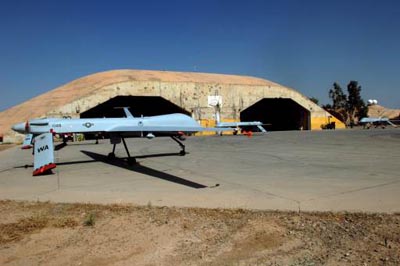An Air  Force official has told Dow Jones Newswires that the service’s plan to become the lead agent for higher-flying unmanned aerial vehicles could save DOD some $1.7 billion over the next six years. Rebecca Christie reports that USAF’s technical advisor for intelligence-surveillance-reconnaissance integration and planning, Bruce Nelson, attributes the savings primarily to reduced duplication of effort through “centralized purchases.” This is not the first time the Air Force has ventured down this road, and, once again, it has come under fire.
Force official has told Dow Jones Newswires that the service’s plan to become the lead agent for higher-flying unmanned aerial vehicles could save DOD some $1.7 billion over the next six years. Rebecca Christie reports that USAF’s technical advisor for intelligence-surveillance-reconnaissance integration and planning, Bruce Nelson, attributes the savings primarily to reduced duplication of effort through “centralized purchases.” This is not the first time the Air Force has ventured down this road, and, once again, it has come under fire.
The final version of the fiscal 2026 defense policy bill calls for adding $1.2 billion to the Space Force’s research and development accounts, an increase that’s mostly split between two efforts: expanding the service’s low-Earth orbit data transport network and boosting its space-based missile warning and tracking capabilities.

